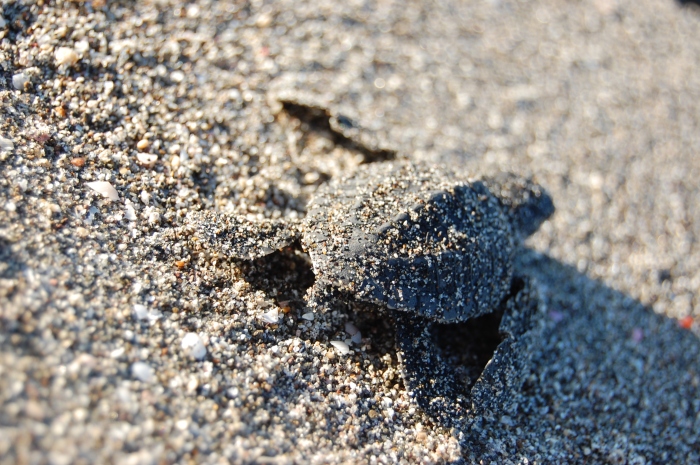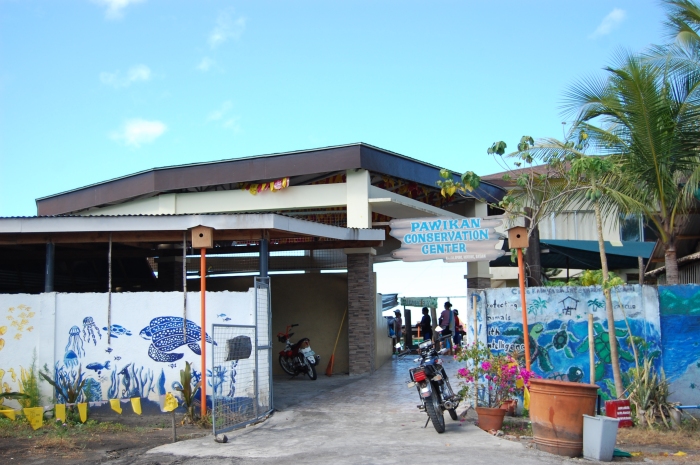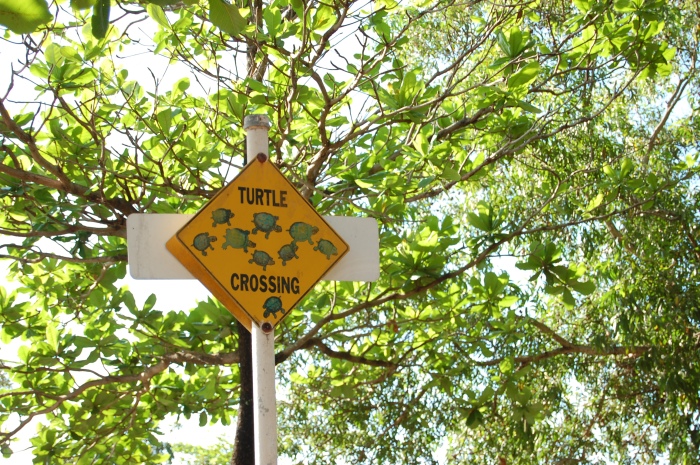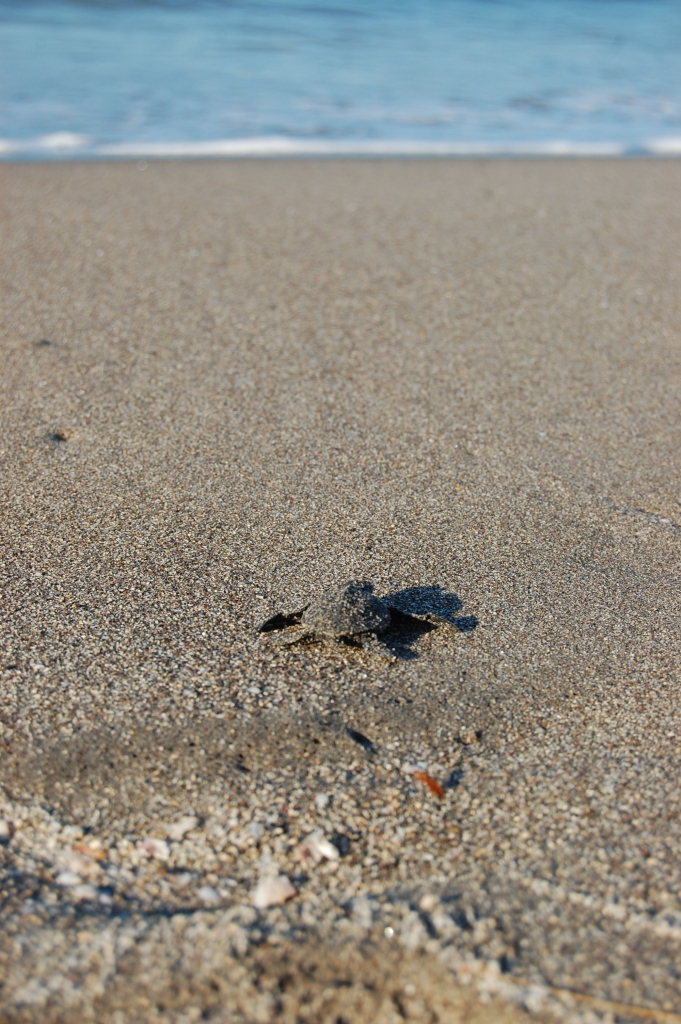Turtles are our only living opportunity to witness natural prehistory. They are dinosaurs, in the sense that they have been around for over 100 million years. But thanks to human carelessness, their populations have plummeted only over the last few years. Today, turtles are considered endangered, and with the way things are going, they are expected to become extinct within the next half-century.
Imagine that.

The Pawikan
Like any creature, the sea turtle plays an important role in the ecosystem in which it thrives. Pawikans keep seagrass beds healthy (which many marine organisms consider their habitat) by trimming the beds and fertilizing them. Their unhatched eggs provide nutrients to beachside vegetation, which prevent coastal erosion. The extinction of sea turtles means the eventual extinction of the world it inhabits.
Pawikans in the Philippines
Say what you want about the Philippines, but I’ve acquired a tremendous, new-found respect for my country’s land after discovering that out of the seven turtle species found around the world, five are found in the Philippines. And already three out of those five are found in Bataan – the hawksbill, the olive ridley, and the green sea turtles.
It seems that olive ridley turtles are more common in this part of Bataan, because these are the hatchlings that we are set to release. However, the olive ridley population is threatened and they classified as a vulnerable species, while other turtle species are considered endangered around the world.
Releasing Turtles at the Pawikan Conservation Center
The Pawikan Conservation Center in Barangay Nagbalayong, Morong, Bataan, is a stone’s throw away from gray Manila, taking only 3 hours by car. And it is a largely pleasant, straightforward, smooth, traffic-less drive, thanks to the NLEX, SCTEX, and polished Subic – Morong roads.

Pawikan Conservation Center
We started our trip at 4:00 AM, and arrived at the center at exactly 7:00 AM — late by a hair, as hatchlings are meant to be released ideally between 6:00-7:00 AM, or even earlier, when it is a bit darker, a little cooler, and more tolerable for newborn turtles to manage.
Search parties for turtle nests usually happen at night, the clandestine hours when turtles lay their eggs. When the nests are found, the eggs are collected and are kept safe at the center until they hatch.
When releasing them, set them on the sand at least 4 meters away from the water so that they can remember the beach on which they were born, and they can return here to lay eggs when they themselves are ready to become parents.
Nesting season for the pawikan is marked by a big, colorful festival — the Pawikan Festival — in November, and then fizzles out in March as summer rolls in.
The conservation center was once a humble hut with simple infrastructure. Today it is a colorful, welcoming establishment – reflecting the mood of the festival which marks the beginning of turtle season – featuring newly-constructed concrete accommodations; a proper orientation area for groups and students on field trips; a dedicated hatchery; and a permanent installation featuring the lifecycle of a pawikan, resembling more a grassroots-level amusement park/museum.



Dedicated volunteers – the fishermen of Bantay Pawikan, Inc. – are responsible for the center. Most notable of the staff are Chairman Manolo Ibias and Mang Arturo, who welcomed us warmly at the break of dawn, and generously shared stories about the turtles and the center with us.
Founded in 1999, the center is committed to protecting these magnificent creatures, which they themselves, once upon a time, hunted and sold for profit. Prior to the center’s existence, the locals of Bataan poached the sea turtles for food or livelihood. But with the Department of Environment and Natural Resources identifying Morong as a pawikan nesting ground, the locals began to understand the value of the sea turtles, and prompted a more sustainable, protective approach to their treatment of the pawikan. Since then, they’ve invested in the “Adopt-A-Turtle” release program as a sustainable means to spread awareness about the turtles and maintain the center.
Today, they are dependent on an entrance fee or P20 per person, and a release fee of P50 per hatchling. They also welcome donations from well-meaning philanthropists and environmental enthusiasts. Additionally, the center features a resort on one side of the premises – convenient for those late night nest searches.
The Pawikan vs The World

The pawikan’s survival is marred by both natural and unnatural factors, coming from all sides. Sea turtles often fall prey to natural predators, such as sharks, which cannot be blamed for preying on sea turtles. It is a natural occurrence to be prey and be preyed-upon; this is the food chain in effect.
However we can blame these other unnatural occurrences for their disappearance, all of which are human-related:
Poachers. As an exotic delicacy, accessory, or pet, sea turtles are captured to make a profit out of by impoverished community members, and are often told for the consumption of fine dining restaurants, or to private citizens to keep at home, while their hyde and shells are used to make various items.
Some volunteers at the Pawikan Conservation Centre have confessed to being poachers once upon a time, when they had no other option for livelihood. They now spend their time and efforts helping protect the turtles, as a sort of penance for their past lives.
Improper garbage disposal. Hungry sea turtles are susceptible to mistaking garbage for food. Plastic bags can look a lot like jellyfish. Plastic straws blend in with sea grass. Remember that poor turtle with a calcified plastic straw stuck in his nostril? All of these contribute to the deterioration of turtle health one way or another.
Climate change can lead to habitat loss, what with the death of viable food sources in the water. Additionally, the drastic change in temperature causes an imbalance to their gender populations and disrupts their breeding — water temperature determines turtles’ sex, and warmer waters could mean more female turtles than male.
Fishing activities. Sea turtles get caught in the crossfires of fishing activity, as mass fishing equipment are often indiscriminate with their catch.

Pawikan Conservation Center
Only 1 out of 100 of these hatchlings will survive to reach adulthood, a statistic both discouraging and hopeful beyond measure. I worried that boat propellers would eat them up before they even had a chance to make it into the wild. I wonder which of them made it out of the cove, if any of them even did? How far did they go that day? How far will they go into the world? How long will they live? Will any of them be the lucky ones to birth the next generation of survivors? Will the turtles make it past the next 50 years?
Humble as it is, the Pawikan Conservation Center exists because the good people of Bataan have fortunately realized that the significance of the pawikan transcend space and time. On their shoulders they carry the daunting task of not only protecting sea turtles and the magnificent natural history that is attached to them, but preventing the extinction of the last remaining dinosaurs.
Abridged version published in Issue 6 (April – June 2018) of Seventy One Magazine.



















Good reads!
LikeLike
Thank you! 😀
LikeLike